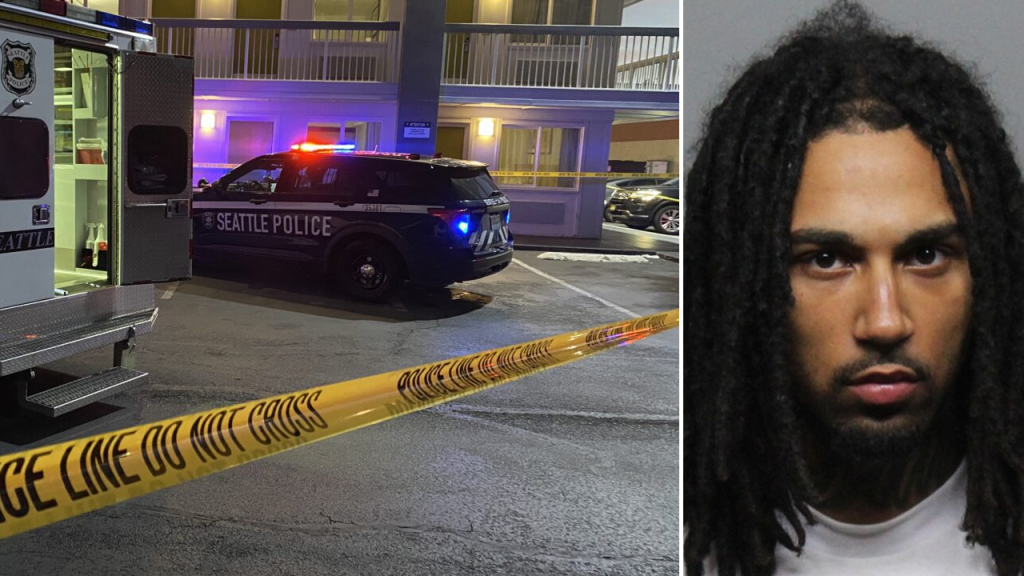Justice Delayed: California’s Mistaken Release of Murder Suspect Leaves Family in Anguish
In a troubling failure of the criminal justice system, California authorities inadvertently released 20-year-old Isaiah Jamon Andrews from the Martinez Detention Facility on October 22, despite his being wanted for murder in Washington state. Andrews had been arrested just three days after allegedly shooting and killing 20-year-old Theodore Wheeler IV in Seattle’s Northgate neighborhood on October 15. The error has triggered a multistate manhunt led by the U.S. Marshals Service and left the victim’s family devastated and fearful. The Contra Costa County Sheriff’s Office acknowledged the mistake, stating they only realized Andrews had been released after he had already walked free. A search of the surrounding area yielded nothing, and officials are still investigating how such a critical oversight occurred. What makes this situation even more alarming is that Andrews was facing additional local charges in California and had an outstanding juvenile warrant from Sacramento County at the time of his mistaken release.
“Certainly, it was an error that if they had to go back and do it all again, they would’ve done something differently,” admitted Seattle Police Chief Shon Barnes in an interview with KUTV. His statement highlights the gravity of the situation but offers little consolation to Wheeler’s grieving family, who now live in fear knowing their loved one’s alleged killer is once again free. The bureaucratic breakdown appears to have occurred during what should have been a routine detention pending extradition to Washington state. Despite Seattle police having properly identified Andrews as the suspect and securing a felony warrant within days of the shooting, the system failed at the crucial moment of custody transfer, revealing dangerous gaps in inter-jurisdictional communication and accountability in the criminal justice process.
For Wheeler’s mother, the pain of losing her son has been compounded by the callous manner in which authorities handled the situation. She learned about Andrews’ release not from officials but through other sources, an oversight that she feels demonstrates a profound lack of respect and consideration for victims’ families. “I’m sad, I’m hurt, I’m disappointed. I feel like they don’t care,” she told reporters, her voice reflecting the anguish of a parent whose trauma has been needlessly amplified by institutional failure. “Nobody notified me.” Beyond her grief, she now carries the additional burden of fear, knowing the man accused of killing her son walks free. Her condemnation of the system’s failure resonates with many victims’ families who find themselves forgotten in the machinery of justice: “They shouldn’t have anyone in the field who would let something like this happen. Never. I want someone to step up and take responsibility. They’re putting my family in danger.”
The human cost of this error extends beyond the immediate security concerns. Wheeler’s family described him as the “glue” that held them together, a young man whose life was cut tragically short by gun violence. “He was my strength,” his mother said, the simple statement conveying the immeasurable void left by his absence. “We’re all hurting. I still want justice for my baby. He didn’t deserve this.” These words paint the portrait of a family whose path to healing has been obstructed not only by crime but also by the very system designed to provide justice. According to Seattle police, Wheeler was found with a gunshot wound to the chest on the evening of October 15 and died at the scene. Detectives quickly identified Andrews as the suspected shooter, and California authorities notified Seattle police of Andrews’ arrest on October 18—just three days after the shooting. Yet, the planned extradition never materialized due to the inexplicable release.
Chief Barnes pointed to a fundamental breakdown within the broader criminal justice ecosystem: “I think sometimes people forget that it is a criminal justice system: cops, courts and corrections. And although we did our due diligence, the courts and that part of the system did not.” His comment highlights the interdependency of various components within the justice system and how a single point of failure can undermine an entire process. When communication breaks down between jurisdictions, or when procedures aren’t properly followed, the consequences can be dire—especially for victims’ families who rely on the system to deliver some measure of justice. This case illustrates how administrative errors can have profound human impacts, turning a family’s grief into a nightmare of uncertainty and fear.
As the manhunt continues, authorities have warned the public not to approach Andrews if seen, instead urging people to call 911 or contact the Contra Costa County Sheriff’s Office directly. This incident serves as a sobering reminder of the critical importance of proper protocols and communication in the criminal justice system. While Andrews remains at large, Wheeler’s family continues to wait for answers and accountability. Their story represents countless other victims and families who find themselves caught in the gap between the promise of justice and its delivery, highlighting the need for systems that not only apprehend suspects but also respect and protect the dignity of those most affected by violent crime. In the pursuit of justice for Theodore Wheeler IV, the system has faltered, but the call for reform and accountability grows louder with each passing day that his alleged killer remains free.


